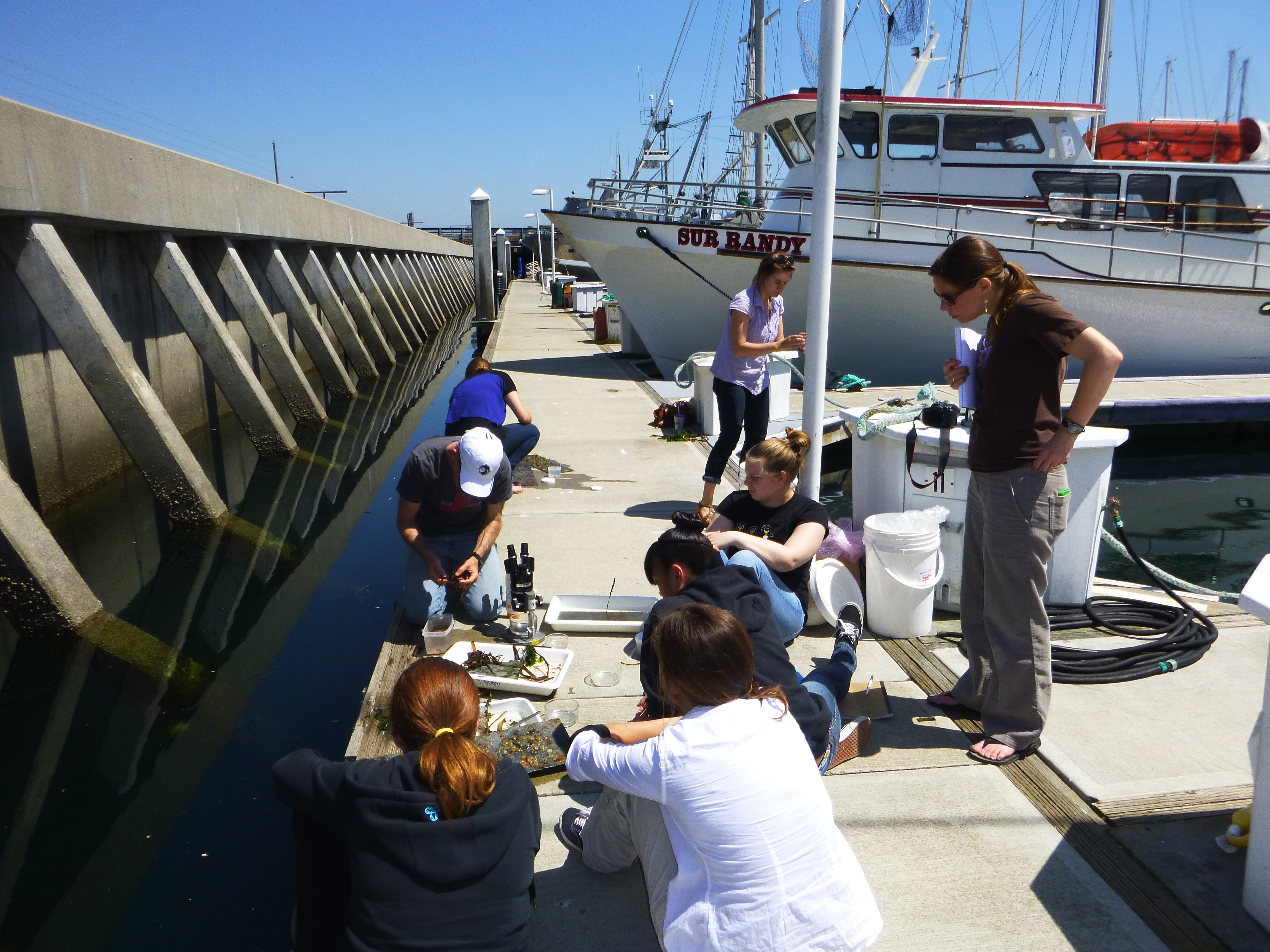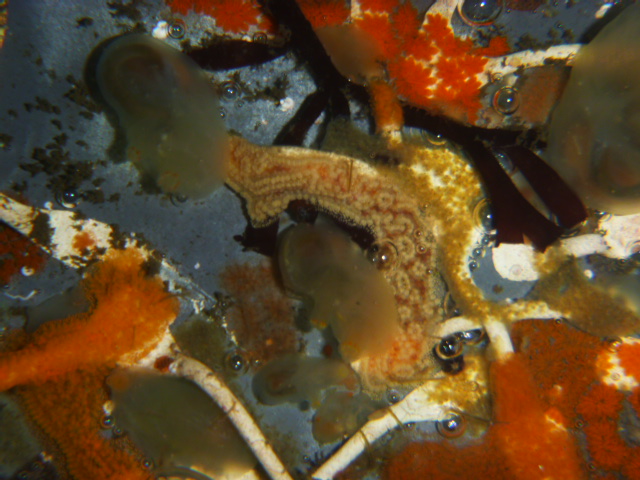By Michelle Marraffini, Invertebrate Zoology Lab
Classes at Moss Landing are a lot of work but they can also be a lot of fun. We get to go on cruises through the bay and learn coastal sampling methods. This past spring semester the Invertebrate Zoology class, while attempting to learn >30 phyla of invertebrates we took time out to visit my favorite Monterey Harbor. Here we looked at some PVC settlement plates I had put out earlier in the semester. They collect may groups of settling animals such as Bryozoans, Chordates (Tunicates), and Barnacles. Students took time to examine these sessile (not moving or semi-permanently attached) animals under some dissecting microscopes we brought with us. These sessile animals are part of the marine fouling community, generally known for their ability to attach to almost anything in the water including piers, floating docks (like the one we were standing on in the above picture), and even the bottom of people's boats. Thanks to a little sunshine and fun things to see, we had a great afternoon on the docks.




